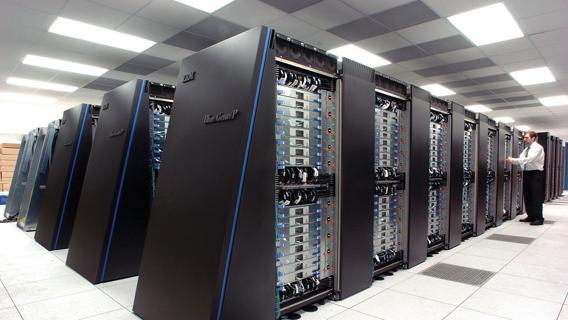Supercomputers
Supercomputers
Supercomputers are the fastest and the most expensive machines. They have high processing speed compared to other computers. The speed of a supercomputer is generally measured in FLOPS (Floating point Operations Per Second). Some of the faster supercomputers can perform trillions of calculations per second. Supercomputers are built by interconnecting thousands of processors that can work in parallel.
Supercomputers are used for highly calculation-intensive tasks, such as, weather forecasting, climate research (global warming), molecular research, biological research, nuclear research and aircraft design. They are also used in major universities, military agencies and scientific research laboratories. Some examples of supercomputers are IBM Roadrunner, IBM Blue gene and Intel ASCI red. PARAM is a series of supercomputer assembled in India by C-DAC (Center for Development of Advanced Computing), in Pune. PARAM Padma is the latest machine in this series. The peak computing power of PARAM Padma is 1 Tera FLOP (TFLOP).

Supercomputers
The Advantages of a Supercomputer
» Solve bigger problems
» Run more problems in shorter time
» May save money
» Allows for virtual testing
» Can be used for R&D
Disadvantages of Supercomputer
» Can be expensive
» Takes up a lot of space
» May only be good for specific applications
» Does not replace physical testing
» Requires trained staff
